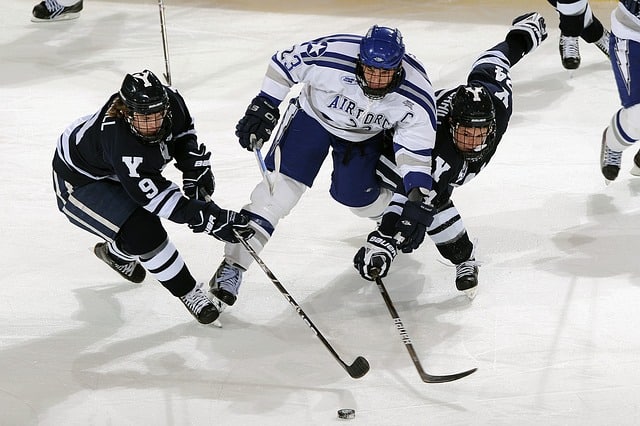Physicists studied the mechanical properties of the boundary layer on the ice surface turned out to be very different from the corresponding parameters of the water in the volume. In particular, the thickness of this layer turned out to be much less than theoretically expected, and the viscosity is about two orders of magnitude greater than that of pure water. The results obtained for the first time make it possible to give a full explanation of the ease of slipping on the ice, despite numerous studies on this topic in the past.
The smooth surfaces of compressed snow and ice have a surprisingly low coefficient of friction, which allows them to be glided over, for example, with the help of skates or skis. This circumstance has been known to people since ancient times and for at least 150 years has attracted the close attention of scientists trying to find an explanation for these processes.
The main idea that is usually used to describe the phenomenon of ice slippage is the appearance of a thin layer of liquid water between the ice and an object moving along it. This hypothesis was expressed by the famous physicist Michael Faraday in his work in 1859. It is believed that liquid arises upon melting of the surface layer of the crystalline phase. However, the long history of studying this issue did not allow a thorough understanding of it. In particular, it was unclear how water, which is a poor lubricant compared to oils, can so reduce friction. Also, many parameters of the liquid layer were not measured directly.
A team of physicists, led by Lydéric Bocquet from the Higher Normal School in Paris, described experiments with a new tribometer (a device for measuring sliding friction), which for the first time made it possible to measure the properties of the very liquid layer on the ice surface. As a result, scientists were able to prove the presence of this layer, the very existence of which was called into question, and also to measure its thickness and viscoelastic properties.
The main measuring tool in the work is a probe in the form of a millimeter-sized ball, which is attached to a mechanical resonator, a modified version of a tuning fork atomic force microscope. This system corresponds to a spring pendulum with a quality factor of about 2500, that is, with very low attenuation.
Oscillations of the tuning fork cause the probe to move back and forth on the surface of the ice with known amplitude and speed. The experiment consists in bringing the probe into contact with the surface of the ice cube, which changes the frequency of oscillation and the quality factor of the system, since the resulting friction increases the energy dissipation. These changes can be measured with high accuracy, and on their basis to calculate the viscosity of the medium in which the movement occurs.
The measured viscosity of the layer turned out to be at the level of hundreds of millipascal seconds, which is about a hundred times greater than that of ordinary water and corresponds to typical values of oils. The layer thickness turned out to be at the level of fractions of a micrometre, which is significantly less than most theoretical estimates. Physicists were also able to show that pseudo-plasticity is characteristic of water in the boundary layer, i.e., a decrease in viscosity with an increase in shear stresses, which is usually characteristic of non-Newtonian fluids, such as saturated polymer solutions.
The researchers conclude that the experimental data can be interpreted as the absence of complete melting of water in the boundary layer. The results are better explained under the assumption that a mixture of crushed ice and water forms on the surface. In additional experiments with a hydrophobic probe, friction decreased even more, which explains the best glide of skis lubricated with water-repellent substances.
